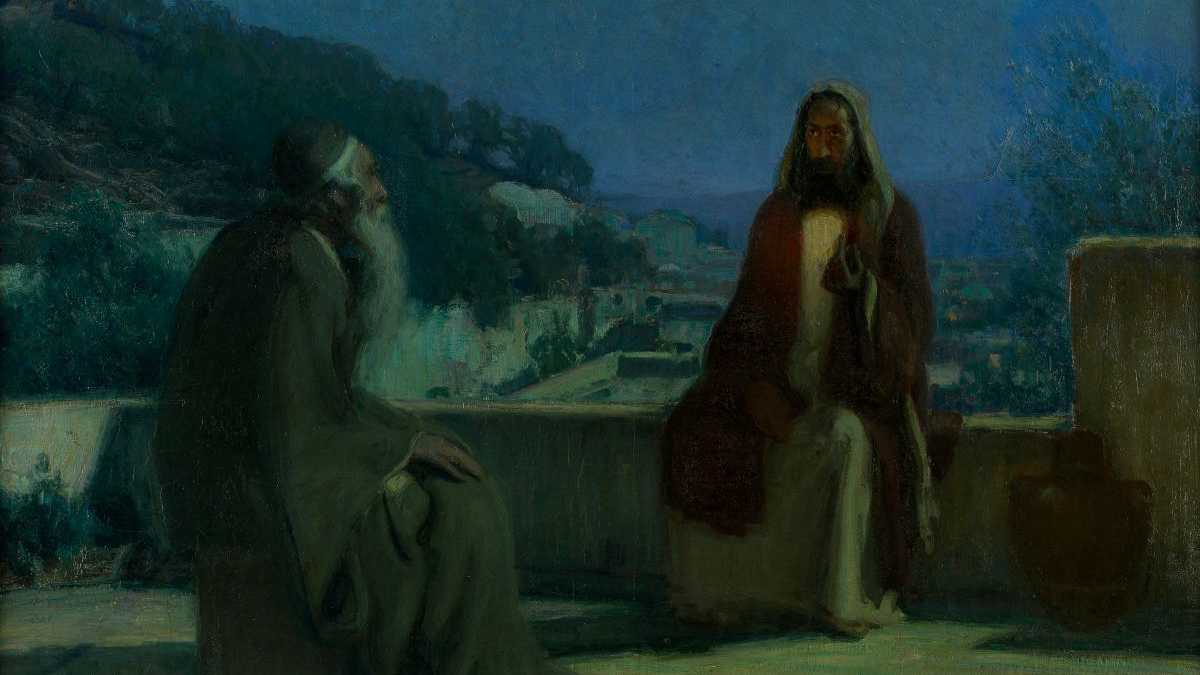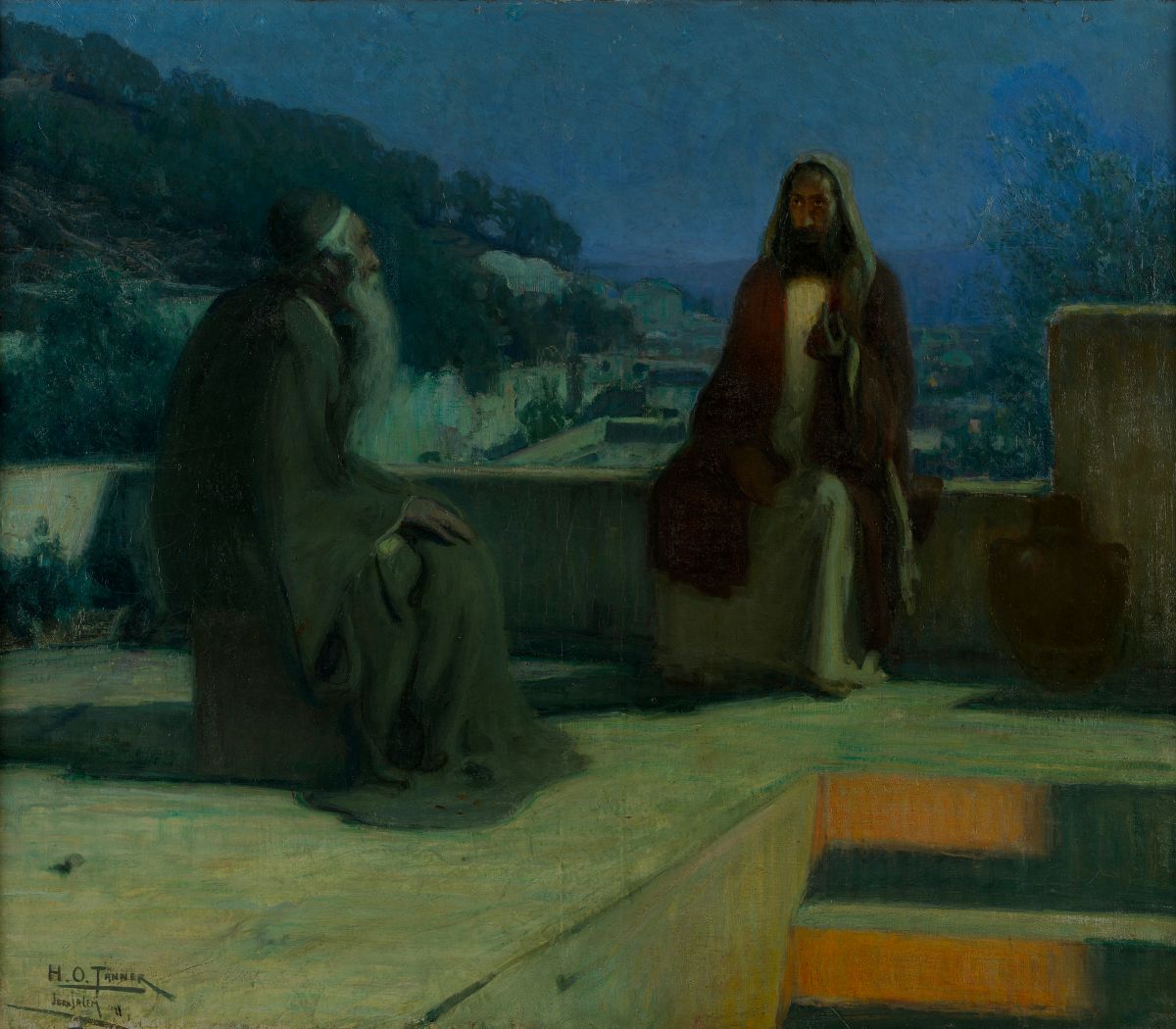
Lent Guide 4
Scripture: John 3:1-16 (ESV)
Now there was a man of the Pharisees named Nicodemus, a ruler of the Jews. This man came to Jesus by night and said to him, “Rabbi, we know that you are a teacher come from God, for no one can do these signs that you do unless God is with him.” Jesus answered him, “Truly, truly, I say to you, unless one is born again he cannot see the kingdom of God.” Nicodemus said to him, “How can a man be born when he is old? Can he enter a second time into his mother’s womb and be born?” Jesus answered, “Truly, truly, I say to you, unless one is born of water and the Spirit, he cannot enter the kingdom of God. That which is born of the flesh is flesh, and that which is born of the Spirit is spirit. Do not marvel that I said to you, ‘You must be born again.’ The wind blows where it wishes, and you hear its sound, but you do not know where it comes from or where it goes. So it is with everyone who is born of the Spirit.”
Nicodemus said to him, “How can these things be?” Jesus answered him, “Are you the teacher of Israel and yet you do not understand these things? Truly, truly, I say to you, we speak of what we know, and bear witness to what we have seen, but you do not receive our testimony. If I have told you earthly things and you do not believe, how can you believe if I tell you heavenly things? No one has ascended into heaven except he who descended from heaven, the Son of Man. And as Moses lifted up the serpent in the wilderness, so must the Son of Man be lifted up, that whoever believes in him may have eternal life.”
“For God so loved the world, that he gave his only Son, that whoever believes in him should not perish but have eternal life.”
Reflection:
Early in his public ministry, excitement around Jesus steadily increased as word about him spread. Jesus became a sensation as people came to him, drawn by the miracles and signs he performed, drawn by his teaching and preaching, and drawn by the Spirit of God. Sinners, saints, skeptics, and spectacle-seekers alike had different reasons for searching him out, but one thing they all had in common was a critical need for spiritual renewal.
Nicodemus was a member of the Pharisees, who, like Jesus and his followers, believed in a Resurrection and an eternal life to come. But until this nighttime encounter with Jesus, Nicodemus had never heard the truth that spiritual rebirth is a requirement for entry into the Kingdom of Heaven.
Nicodemus marvels at what Jesus tells him because it overturns so much of what he’s been taught in a lifetime of earnest study, namely that his citizenship in God’s Kingdom comes from his ancestry. In a similar vein, many today mistakenly believe that it’s possible to be ‘born into’ the Kingdom by virtue of being raised in a Christian home. Others sadly believe they may earn their way into heaven by their works and relative faithfulness to God. Instead, Jesus turns over these expectations. He says that we may ascend with him into the glory of heaven only if we are born again from above. Only by faithfully believing in the one who descended himself from heaven may we receive the promise of eternal salvation.

Nicodemus Visiting Jesus (1899) – Henry Ossawa Tanner
Depicting this encounter with Christ, Henry O. Tanner imagines Nicodemus meeting Jesus on a rooftop terrace in Jerusalem. A highly celebrated artist, Tanner was known for his gifted use of darkness and light in his paintings. While maintaining a very realistic portrayal of the moment, notice how the artist has Christ subtly illuminated both from above by the moonlight and from below by the lamplight shining up from the stairs. Nicodemus comes to Jesus as one living in spiritual darkness, and he comes face-to-face with the true light of the world. The painting’s composition places viewers halfway up the staircase as if also ascending to sit at the Savior’s feet.
Some come to Jesus under the cover of darkness to keep their relationship with him a secret. Some come to him during a ‘dark night of the soul’ after wrestling with the cost of following him. Some come to him gradually, as if in a series of small steps. Whichever one describes your journey to Jesus, when we are reborn in the power of the Holy Spirit we find ourselves stepping out of the worldly spiritual darkness of unbelief and into the light of eternal life.
Jesus’ invitation is not just to Nicodemus, it is also to you.
Contemplation & Prayer:
Imagine yourself taking those last few steps up on the rooftop and sitting down with Jesus beside Nicodemus.
Pray:
Holy Spirit, create in me a clean heart. Renew, refresh, and restore my soul. Help me to step further and further out of darkness each day, and to live in the true light of Jesus Christ, my Lord and Savior. Grant me spiritual rebirth and continuing spiritual growth as your love, joy, peace, patience, kindness, goodness, gentleness, faithfulness, and self-control blossom in me and as I abide in the Father’s love.
Amen
Action & Invitation:
Today or throughout this week…
- Pray for the adults and young children who will make their profession of faith and be baptized this Easter in our worship services. If you have come to faith in Jesus, but have not been baptized and would like to ‘go public with your faith’ this Easter in one of our services by being baptized, please connect with us here to talk to a pastor.
- Listen to composer Bob Chilcott’s “God So Loved the World” performed by the Mississippi College Singers, which Director of Music Greg Hobbs has chosen as a musical companion piece for John 3.


